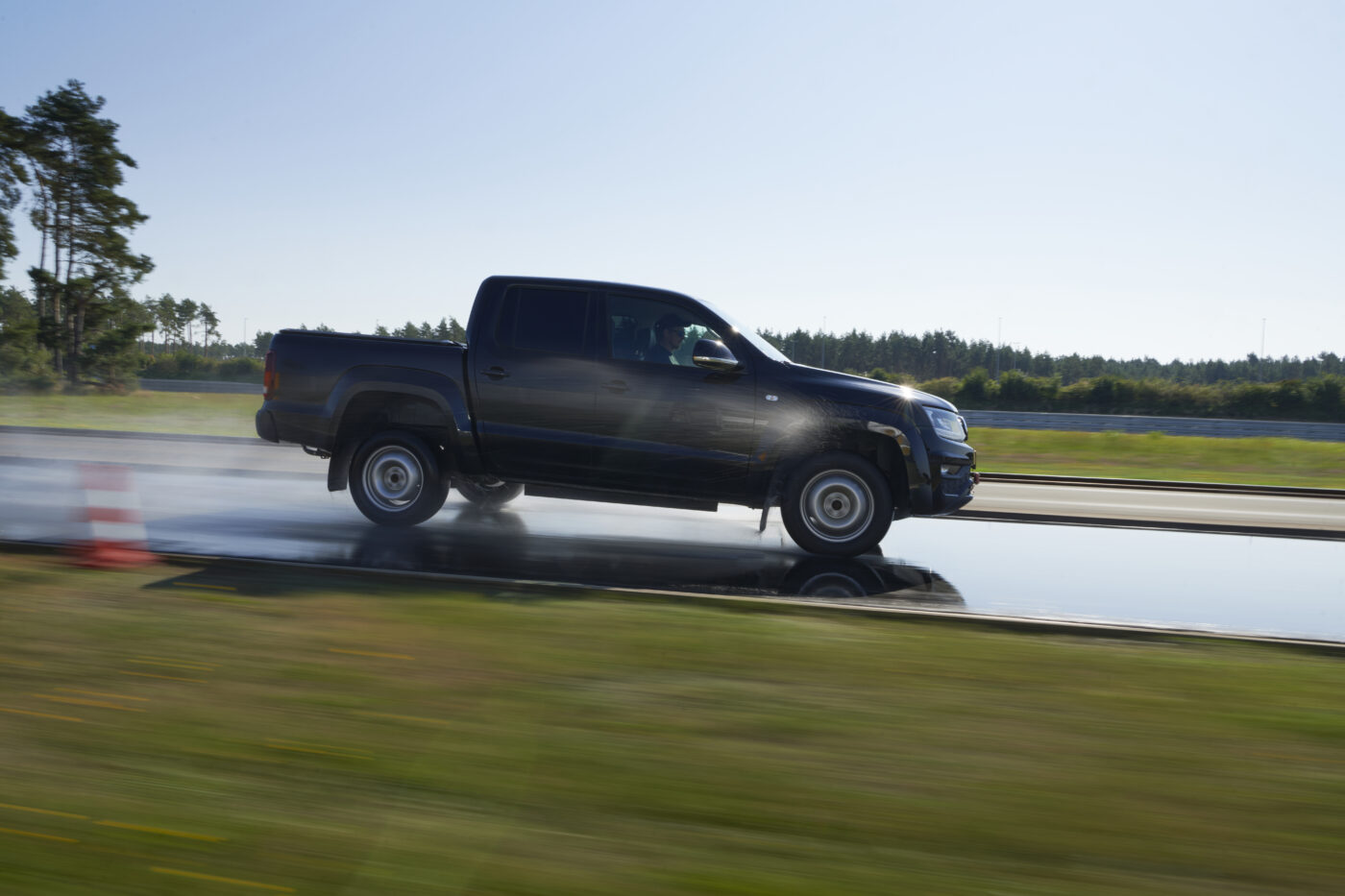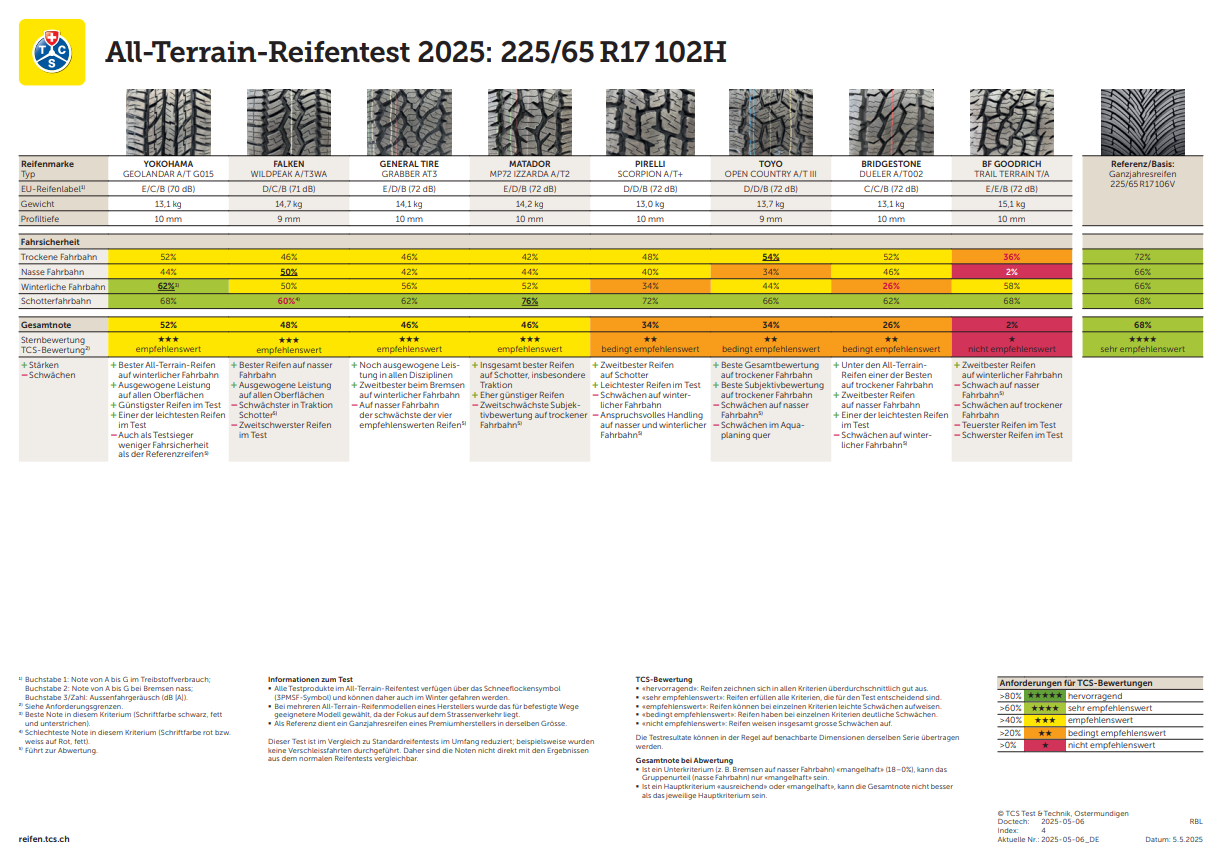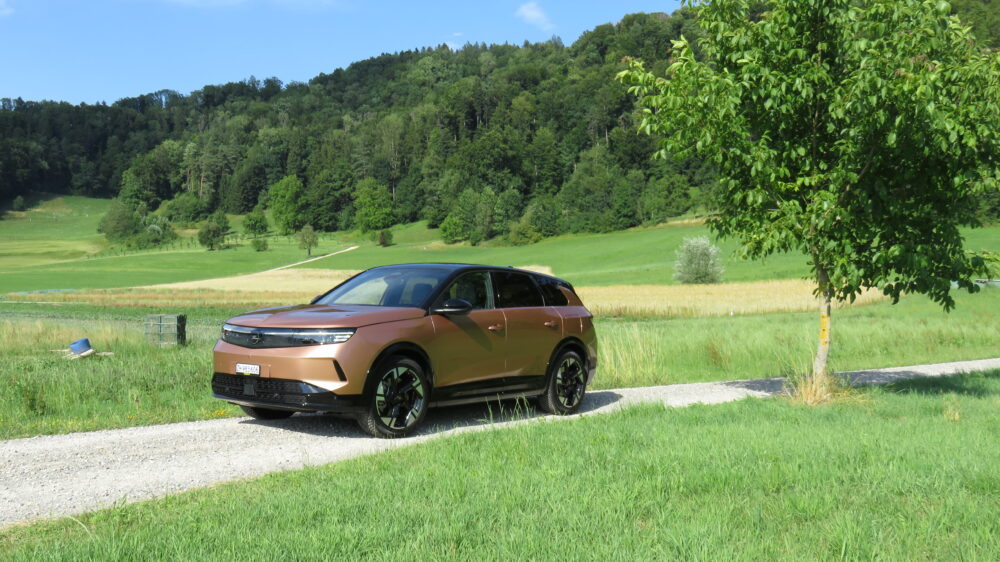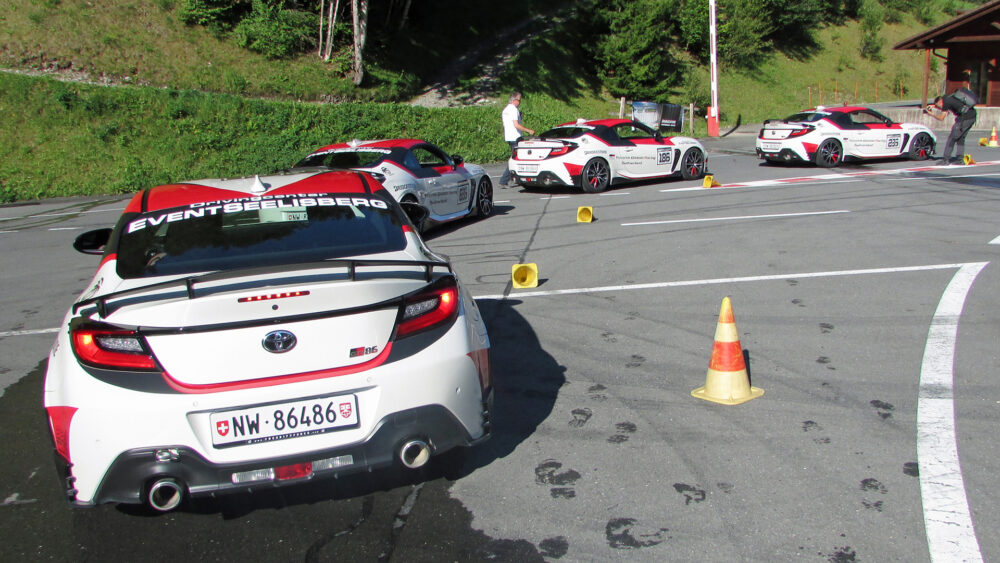TCS test: All-terrain tires hardly convince in the wet
The focus of the latest TCS tire test was not on summer or winter tires, but for the first time, the experts evaluated so-called all-terrain tires in the size 225/65 R17 102H. They are used on SUVs, minibuses, camper vans and pick-ups.
Eight models of all-terrain tires were put through their paces in the first TCS test, both on the road and off-road. The results are mixed: While all-terrain tires prove themselves off paved roads, their handling characteristics are particularly worrying on wet roads. One model was even classified as "not recommended". This is despite the fact that, according to the manufacturer, all-terrain tires are designed for different surfaces such as mud, gravel or snow, but should still offer acceptable driving characteristics on asphalt.
Is the compromise worth it?
Sure, the rubber is a compromise between pure off-road tires and conventional road tires, but who changes tires all the time when they switch from road to off-road? Nobody! This type of tire is intended for all-round vehicles such as SUVs, minibuses, campervans and pick-ups, which occasionally travel off-road and still sometimes cover long distances on asphalt.

The test results differ greatly. All models evaluated offer good grip on gravel paths and muddy surfaces. On dry and especially wet roads, however, they were only moderately convincing: Four models were rated "recommended" by the experts, three "conditionally recommended", but one even had to be classified as "not recommended". Furthermore, none of the all-terrain rubbers tested could keep up with the all-season tires tested at the same time.
Good grades off the road
On non-asphalted surfaces such as gravel or mud, all the tire models tested performed well. Their properties hardly differed. The Matador MP72 Izzarda A/T 2 achieved the best results in off-road conditions, closely followed by the Pirelli Scorpion A/T+. The all-season comparison model came in third place, on a par with the Yokohama Geolandar A/T G015 and the BF Goodrich Trail Terrain T/A. "It should be noted that, in addition to the tires, four-wheel drive or a differential lock can also significantly improve driving characteristics on unpaved terrain," added the TCS experts.

Up to 15 meters longer braking distance in wet conditions
"On wet roads, the limits of an all-terrain tire become obvious, especially when braking," says Reto Blättler, project manager for tire testing at TCS. During emergency braking at 80 km/h, no all-terrain tire achieved the performance of the reference all-season tire. The deviation of the BF Goodrich Trail Terrain T/A is even alarming: its braking distance is 15 meters longer than that of the all-season tire. This means that if the vehicle with all-season tires is stationary, the vehicle with BF Goodrich will continue to drive at 45 km/h. This weak point justifies the "not recommended" rating for this model. In addition to the longer braking distance, a very unbalanced driving behavior was observed.

A little better in the snow
Some tires, such as the Pirelli model, have a strong tendency to oversteer. All of the all-terrain tires tested also have higher fuel consumption and noise levels than conventional road tires. This is due to the design of the all-terrain tires with their wide tread, hard rubber compounds and higher weight.
On snow, the results also vary greatly depending on the model. The Yokohama Geolandar A/T G015 is the only all-terrain tire to receive a "good" rating, ranking on a par with the all-season tire. The tires from Falken, General Tire, Matador, Toyo and BF Goodrich were rated "satisfactory". Pirelli and Bridgestone, on the other hand, received a "sufficient" rating on snow.









